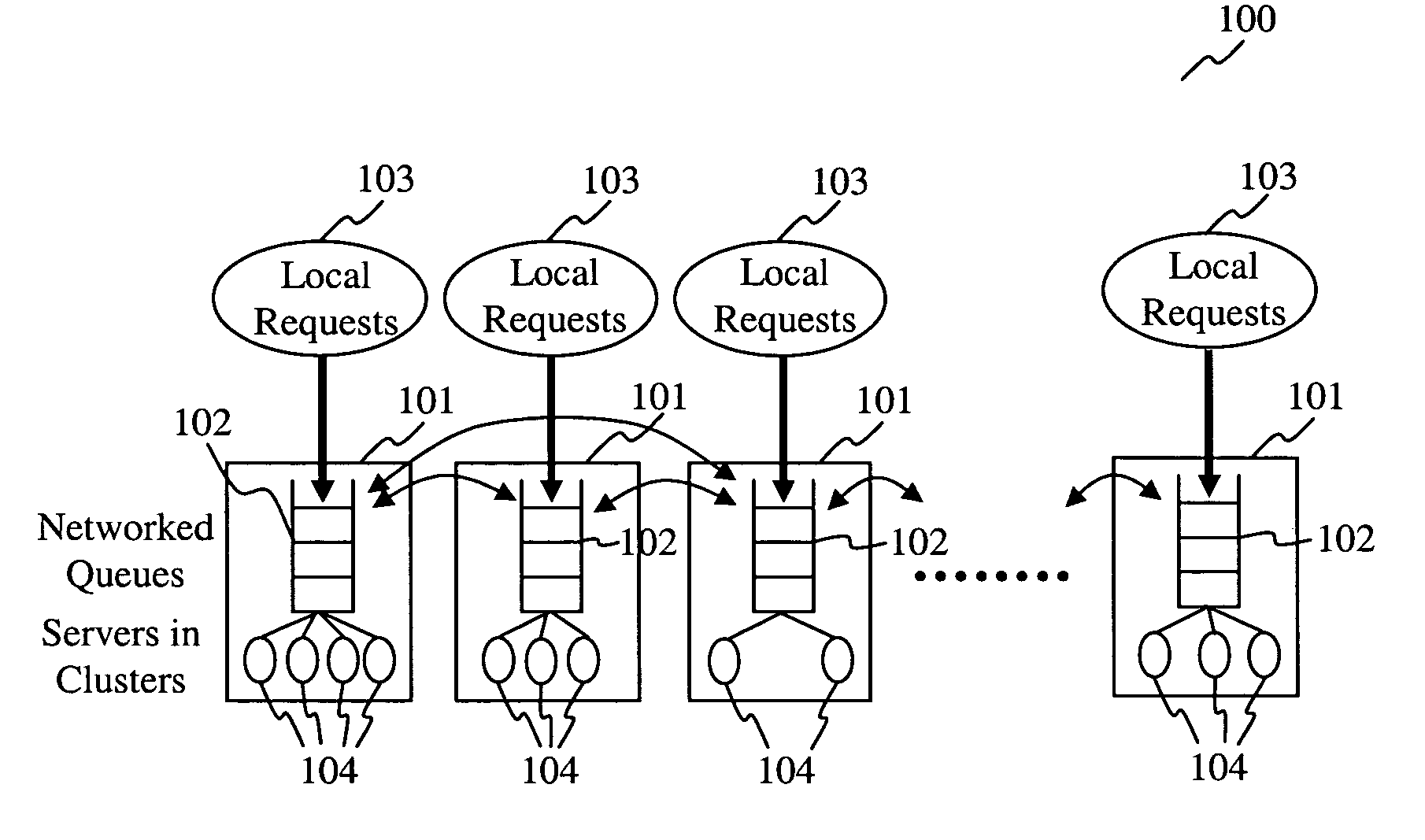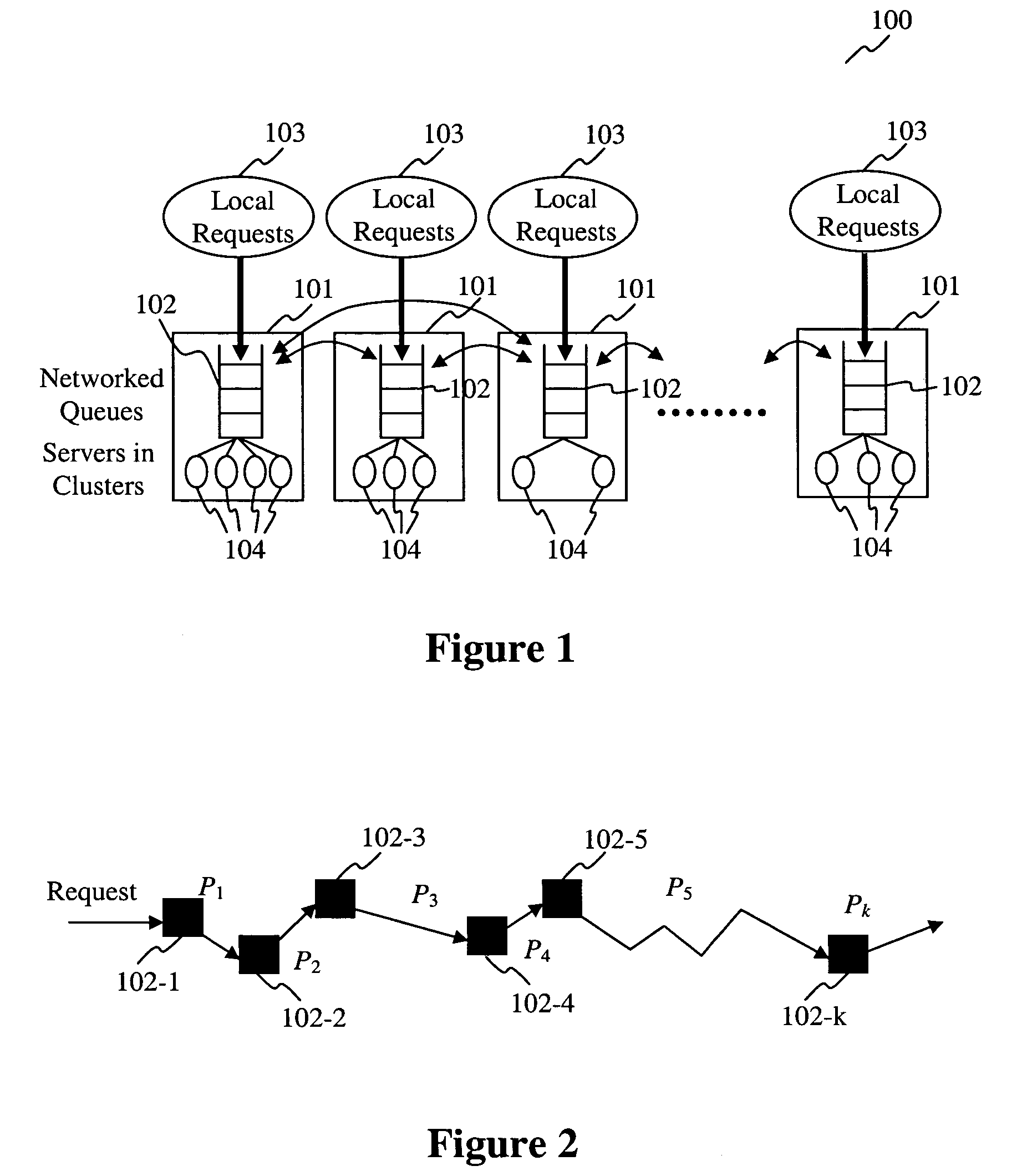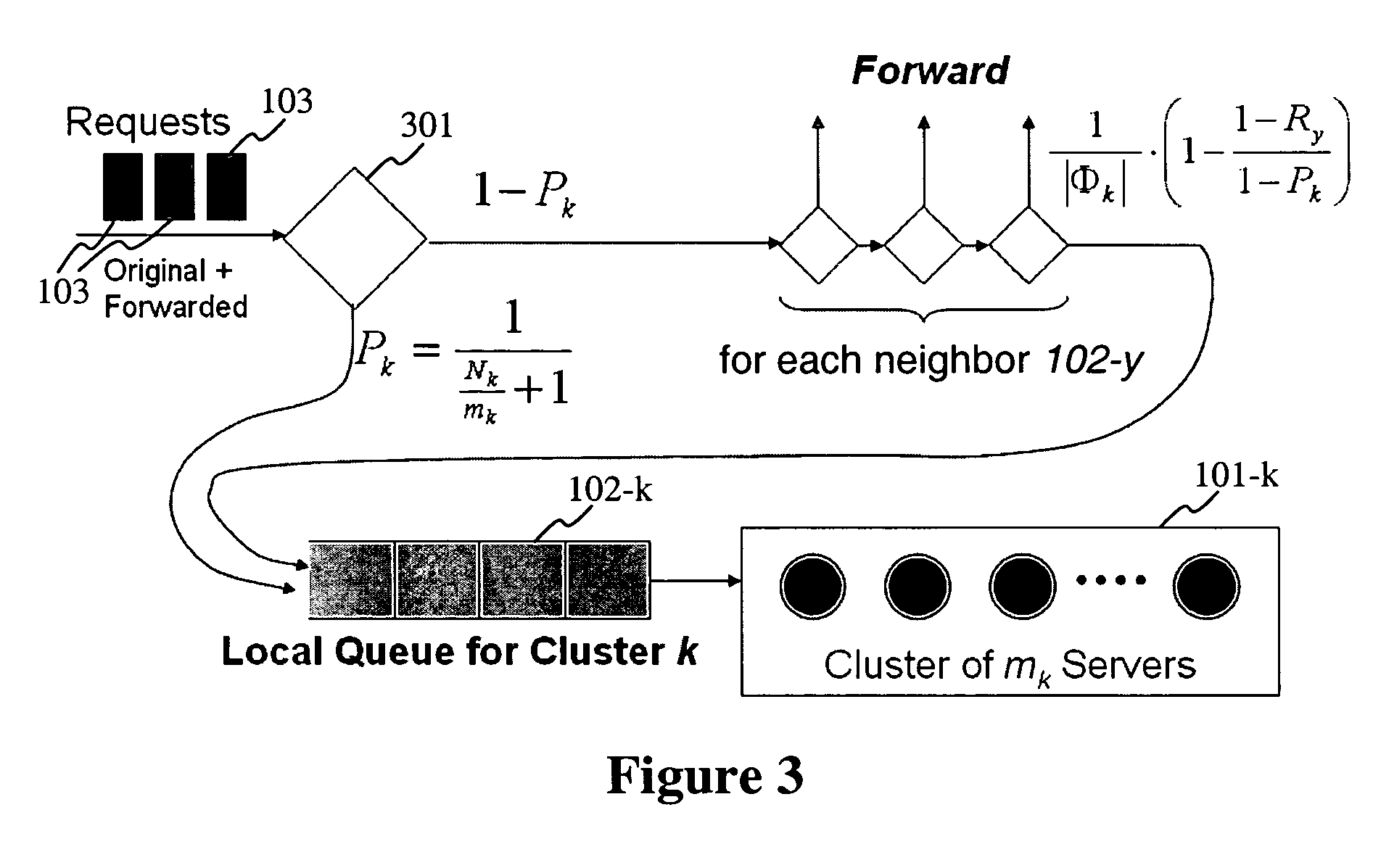Networked queuing system and method for distributed collborative clusters of services
a networked queuing and clustering technology, applied in the field of computer networking, can solve the problems of increasing the average service time of users, increasing the difficulty of networking those clusters, and increasing the importance of load balancing
- Summary
- Abstract
- Description
- Claims
- Application Information
AI Technical Summary
Problems solved by technology
Method used
Image
Examples
Embodiment Construction
[0002]1. Field of the Invention
[0003]The present invention is related to computer networking and, more specifically to queuing in a computer cluster environment.
[0004]2. Description of the Related Art
[0005]Load balancing has been an increasingly important issue for handling computational intensive tasks in a distributed system using Grid and cluster computing. There are several reasons for the increasing use of such distributed systems since the 1990s. First, scientists can deploy a parallel algorithm for handling a complex computing task on multiple workstations and personal computers as fast as running it on a supercomputer which had previously been thought to have unsurpassed computing power, while it costs much less to share the workstations and personal computers than to buy a supercomputer. Second, the fast growth of the Internet, wireless networks, and mobile computing has resulted in many applications that require a distributed computing environment due to the dispersed loca...
PUM
 Login to View More
Login to View More Abstract
Description
Claims
Application Information
 Login to View More
Login to View More - R&D
- Intellectual Property
- Life Sciences
- Materials
- Tech Scout
- Unparalleled Data Quality
- Higher Quality Content
- 60% Fewer Hallucinations
Browse by: Latest US Patents, China's latest patents, Technical Efficacy Thesaurus, Application Domain, Technology Topic, Popular Technical Reports.
© 2025 PatSnap. All rights reserved.Legal|Privacy policy|Modern Slavery Act Transparency Statement|Sitemap|About US| Contact US: help@patsnap.com



